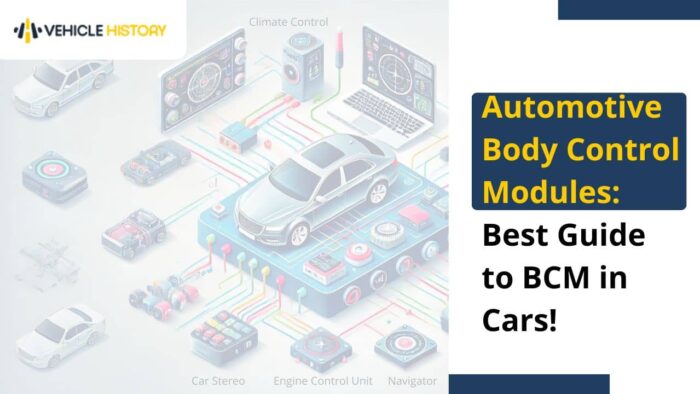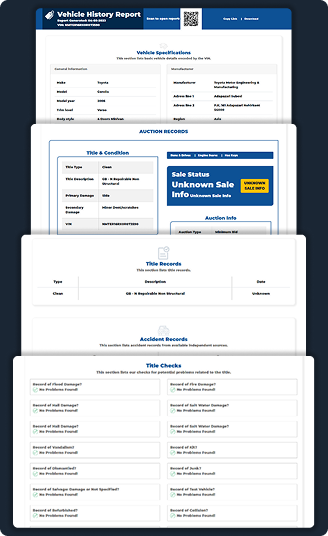An automotive body control module (BCM) is a centralized hub that manages and controls all the electrical system components of a car – including the communication network of several terminals, switches, wires, and sensors.
Over the last few years, world-class car manufacturers have paid more attention to producing vehicles that focus heavily on safety and a seamless driving experience. Technological advancements are making the architecture of the vehicle electrical system continue to get complex, thus requiring innovative technology and new solutions like the BCM.
The Body Control Module or Body Control Unit ensures the various electrical systems operate properly and efficiently. It helps to efficiently improve their functionality, leading to a more comfortable driving experience for users.
In this blog, we will discuss the body control module, its functionality, components, importance, signs of a bad Body Control Module, and how malfunctioning can negatively impact car maintenance and duration of use.READ ALSO: A Comprehensive Guide to Jump-starting a Car
What is a Body Control Module?
Think of the Body Control Module (BCM) as the brain of an automobile’s electrical system. In this tiny box, the BCM can seamlessly control several functions by communicating with the many sensors and switches mounted on the vehicle.
The Body Control Unit, sometimes called a car’s ECU, delivers any function related to convenience, comfort, and user safety during vehicle use. A vehicle’s BCM is responsible for regulating all the functions,
The Body Control Unit, also known as a car’s electronic control unit (ECU), delivers any function related to the user’s convenience, comfort, and safety while using the vehicle. These functions include things like:
- Turning the headlights on/off
- Regulating the AC temperature
- Controlling the power windows,
- and more.
A BCM is crucial in understanding what to do when the sensor realizes a change. It can switch on and off functions and operations, motors, and lights, by sending signals to operate the relays and many other devices.
How Does a Car’s Body Control Unit Work?
Generally, the Body Control Unit or Module is a centralized hub that receives signals from input devices and sensors within the vehicle, which are called input signals.
Then, the BCM communicates with output devices to switch the door lock ON/OFF or regulate the power windows, which are called the output signals.
For instance, when you press the power window switch, the BCM sends an input signal to the control unit. The unit then transmits a command to the motor to move the window up or down.
In addition, the BCM interacts with the Controller Area Network (CAN), Local Interconnect Network (LIN), and Engine Control Module (ECM).
Features of the Body Control Module (BCM)
BCMs have both hardware and software components. The hardware consists of load drivers, sensors, and other components to receive and send signals. The software is typically built into the BCM to manage communication between components and with different control units.
Depending on the different manufacturers and use cases, the BCM may have differing functionalities. But generally, these are the functions of BCMs:
- Convenience Features: The BCM can help coordinate features like the memory settings for infotainment, seats, and mirrors.
- Climate Control: The BCM coordinates the air conditioning and temperature sensors to maintain an optimal interior environment. This allows for easy temperature adjustment, fan speed, and HVAC modes.
- Diagnostic Hub: This collects and stores diagnostic data and reports errors, helping users detect and address issues in the car’s electrical system.
- Energy Efficiency: Optimizing electrical systems helps reduce the rate at which power is consumed, especially when the devices are not in use. While this contributes to fuel efficiency in traditional gas-powered cars, it also helps extend the range of electric vehicles (EVs) by lowering the rate at which a charged EV battery dissipates chemical energy.
- Lighting Control: The BCM controls both the exterior and interior lighting systems and control functions like turn signals, automatic headlights, light dimming, and taillights.
- Door Lock System: The central control unit helps lock or unlock all the doors simultaneously.
- Power Windows: Remember the manual process of raising and lowering the windows of a car? This feature helps with automatic winding up and down using electrical power. It’s that quick and easy.
- Safety and Security Systems: Newer vehicles now have security features like keyless entry systems, immobilizers, and alarm functions to prevent car theft.
- Wiper and Washer Control: The BCM allows for a smooth driving experience in the rain as it also regulates the functions of the windshield wipers, such as the control of wiper speed, intermittent wiper operation, and washer pump activation.
The Challenges with the Body Control Module
Despite the inevitable importance of BCM in modern vehicles, they also have some challenging issues that may cause them to malfunction or misbehave.
- Compatibility: During BCM replacement, it can be complicated to establish smooth integration and coordination with different elements and systems. An ideal BCM should be compatible with various vehicle models. However, this may occasionally be due to outdated or corrupted software, which can affect the BCM’s operations.
- Complexity: Due to technological advancements, a car’s BCM needs to handle many features and functions, which can cause issues with troubleshooting and diagnosis.
- Extreme Weather Conditions: Exposure to either high or extremely low temperatures can alter the BCM’s functionality. While high temperatures can cause overheating, an extremely low temperature can cause the components inside the BCM to stretch and crack, thus increasing the potential for abnormal operation.
- Security: Advanced technology usually comes with newer cybersecurity threats, and BCM should be designed to withstand and remain effective against any unauthorized access to the car, thus preventing car theft.
- Damage by Water or Accident: BCMs are not waterproof and can easily be damaged by water getting inside the car. Contact with water can cause the Body Control Module to misbehave. Also, physical collisions from accidents can cause the BCM to malfunction. The shock from the accident is enough to break the multiple connections inside the BCM, so you don’t necessarily need to see any visible dent in the car’s exterior.
Water does not only damage the BCM but also causes permanent harm to other parts like the engine, brake, airbags, and the electrical system. If you’re buying a used car, ensure you perform a car reg check Ireland to verify any history of flood or accident and buy with confidence, knowing fully well that the car’s safety and reliability are guaranteed.
Symptoms of a Bad Body Control Module
Like any other car parts, the BCM can wear out and malfunction over time. The BCM can pop up several symptoms to indicate underlying issues. For safety reasons, it’s necessary to take proactive measures through early detection to address potential problems and prevent further breakdown.
Here are signs of a bad body control module:
- Lighting issues (warning lights)
- Draining battery issues
- Electrical issues
- Security system error
- Malfunctioning accessories
- Issues with the central locking system
- Error in communication
- Faulty gauges
- Malfunctioning driver assist systems
If you notice any of these problems, the professional advice is to get your vehicle inspected by an experienced technician or mechanic with suitable diagnostic tools. They will diagnose and get a replacement BCM to guarantee your vehicle’s optimal performance, safety, and reliability.
READ ALSO: The Check Engine Light on Car: What Does It Mean?
What Can You Do to Maintain Your BCM?
To maintain the proper functioning of your vehicle’s BCM, ensure the following:
- The electrical system of the car is maintained correctly.
- Avoid exposing your car’s interior to water.
- A certified mechanic or technician carries out any electronic modifications.
- Regularly do a maintenance checkup for your car. This can help identify any issue before leasing to severe or permanent damage to the BCM.
- Once you receive any software updates, update your vehicle’s software. This helps to enhance high performance and guarantee security.
Conclusion
Having your car’s BCM functioning properly is a big deal. It’s crucial to start your car engine and ensure your safety and security as you drive on the highways. If you notice your car’s BCM is responding unusually, quickly call on an expert with the unique tool to fix or replace it.
Frequently Asked Questions
What is the body control module in automotive?
Think of a body control module (BCM) as a centralized electronic hub that manages and controls a car’s electrical system components, including a communication network of several terminals, switches, wires, and sensors.
Will a bad body control module throw a code?
No. However, a car scanner or diagnostic scanner can communicate with your car’s onboard computer systems to access the BCM’s diagnostic trouble codes (DTCs), providing valuable information on potential issues.
Two examples of DTCs involving the airbags include:
B0010 – Driver’s side airbag circuit malfunctioning
B0020 – Passenger’s side airbag circuit malfunctioning
What is the use of an actuator in a car?
A car’s actuator helps convert energy into force by carrying out various performance and convenience functions. These can range from regulating the fuel supply to the engine to channeling the airflow in the climate control system, adjusting the power seats, and operating the liftgates.
How long should a body control module last?
Nothing remains the same forever. Your car’s body control module can last as long as it’s functioning properly. Factors like vehicle usage and maintenance can determine how long a BCM can last. Once you notice its operation is abnormal, it may be time to replace it.


